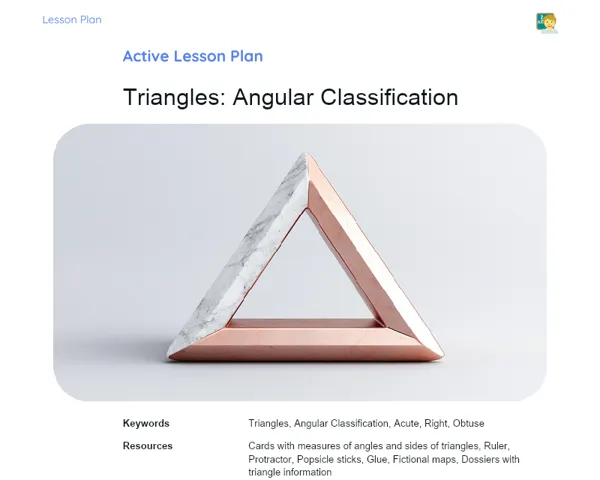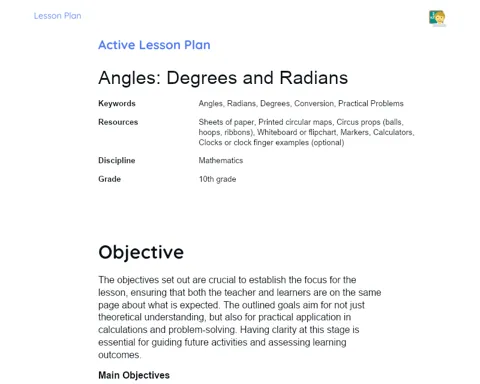Lesson Plan | Lesson Plan Tradisional | Elements of a Sequence
| Keywords | Sequences, Arithmetic Sequence, Geometric Sequence, Patterns, Term Calculation, Mathematics, Grade 8, Practical Examples, Definition, Formulas, Context, Curiosity |
| Resources | Whiteboard, Markers, Slideshow (optional), Projector (optional), Notebook, Pen or pencil, Calculator |
Objectives
Duration: (10 - 15 minutes)
The aim of this stage is to ensure that learners fully understand the class objectives, which will provide a solid foundation for grasping sequence concepts. This understanding will allow them to identify various sequence types and correctly determine the next terms, thereby building the necessary skills to continue their mathematics studies.
Objectives Utama:
1. Grasp the concept of sequences.
2. Identify various types of sequences.
3. Determine the next elements in a sequence based on the given terms.
Introduction
Duration: (10 - 15 minutes)
The purpose of this stage is to engage learners and prepare them for the class content. By sharing initial context and intriguing facts, learners can begin to appreciate the relevance of the topic in the real world, which boosts their motivation to learn. This creates an optimal environment for introducing more complex concepts later in the lesson.
Did you know?
Curiosity: Numeric sequences pop up in many areas of our daily lives and nature. For example, the Fibonacci sequence can be seen in the arrangement of flower petals, the structure of pine cones, and even in cosmic formations like galaxies. Additionally, in technology, sequences play a crucial role in data compression and cryptography.
Contextualization
Kick off the class by introducing the idea of mathematical sequences. Explain that a sequence is an ordered list of numbers that adhere to a specific rule. For instance, in the sequence 2, 4, 6, 8, each number is formed by adding 2 to the one before it. Use a whiteboard or a slideshow to show different examples of sequences, like arithmetic and geometric sequences. Emphasize the importance of spotting the pattern that defines a sequence.
Concepts
Duration: (40 - 50 minutes)
This stage aims to deepen learners' comprehension of mathematical sequences through a thorough explanation of essential concepts and formulas. By working through practical examples and questions, they solidify their knowledge and enhance their ability to identify patterns and calculate terms in varying types of sequences. This process is crucial for ensuring a well-rounded understanding of the topic.
Relevant Topics
1. Definition of Sequence: Explain that a sequence is an ordered list of numbers that follows a specific rule. Provide straightforward examples, like the sequence 2, 4, 6, 8, where each number is 2 more than the one before it.
2. Arithmetic Sequence: Clarify that an arithmetic sequence is one where the difference between consecutive terms remains consistent. Present the general formula for an arithmetic sequence: a_n = a_1 + (n-1)d, where a_1 represents the first term and d is the common difference.
3. Geometric Sequence: Illustrate that a geometric sequence is one where the ratio between consecutive terms is stable. Present the formula for a geometric sequence: a_n = a_1 * r^(n-1), where a_1 is the initial term and r is the common ratio.
4. Practical Examples: Offer various examples of arithmetic and geometric sequences, guiding learners through the solutions step by step. Include examples like: 3, 6, 9, 12 (arithmetic sequence) and 2, 4, 8, 16 (geometric sequence).
5. Pattern Recognition: Encourage learners to spot patterns in provided sequences, highlighting the significance of identifying the rule defining the sequence to predict future terms.
6. Term Calculation: Teach how to find specific terms in a sequence using the formulas introduced. Walk through calculations step by step to enhance learners' comprehension.
To Reinforce Learning
1. For the arithmetic sequence 5, 8, 11, 14, what is the 10th term?
2. What is the 7th term of the geometric sequence: 3, 9, 27, 81?
3. Can you identify the rule of the sequence: 2, 5, 10, 17, 26 and figure out the next term?
Feedback
Duration: (20 - 25 minutes)
This stage strives to ensure that learners consolidate the knowledge they’ve acquired during the lesson by fostering discussions and reflections on the posed questions. This process is essential for clarifying uncertainties, reinforcing key concepts, and engaging learners, enabling them to apply their knowledge in varying contexts and develop a deeper insight into the subject matter.
Diskusi Concepts
1. 🔊 Question 1: For the arithmetic sequence 5, 8, 11, 14, what is the 10th term?\nExplanation: Determine the first term (a_1 = 5) and the constant difference (d = 3). Apply the arithmetic sequence formula: a_n = a_1 + (n-1)d. For n = 10, we have a_10 = 5 + (10-1) * 3 = 5 + 27 = 32. Thus, the 10th term is 32. 2. 🔊 Question 2: What is the 7th term of the geometric sequence: 3, 9, 27, 81?\nExplanation: Identify the first term (a_1 = 3) and the common ratio (r = 3). Use the geometric sequence formula: a_n = a_1 * r^(n-1). For n = 7, this gives us a_7 = 3 * 3^(7-1) = 3 * 3^6 = 3 * 729 = 2187. Hence, the 7th term is 2187. 3. 🔊 Question 3: Identify the rule of the sequence: 2, 5, 10, 17, 26 and determine the next term.\nExplanation: Observe that the differences between terms are increasing incrementally: 3, 5, 7, 9. This indicates that the difference rises by 2 each time. Therefore, the next term should be 26 + 11 = 37.
Engaging Students
1. ❓ Question 1: Why do we have the formula for the arithmetic sequence as a_n = a_1 + (n-1)d? How does this assist in identifying specific terms? 2. ❓ Question 2: In what way can we confirm if a sequence is arithmetic or geometric? What signs should we for? 3. ❓ Question 3: If we are faced with a sequence guided by a more complicated rule, how can we tackle it to unearth the next term? 4. 💭 Reflection: Think of everyday situations where arithmetic and geometric sequences come into play. How could these concepts be valuable beyond the classroom?
Conclusion
Duration: (10 - 15 minutes)
The aim of this stage is to reinforce the knowledge gained throughout the class, summarising the key points discussed and strengthening the link between theory and practice. This ensures that learners possess a clear and comprehensive understanding of the subject, while highlighting the significance and practical applications of the material covered.
Summary
['Definition of Sequence: A sequence is an ordered list of numbers that follows a specific rule.', 'Arithmetic Sequence: A sequence where the difference between consecutive terms is constant. Formula: a_n = a_1 + (n-1)d.', 'Geometric Sequence: A sequence where the ratio between consecutive terms remains unchanged. Formula: a_n = a_1 * r^(n-1).', 'Pattern Recognition: Identifying the rule that shapes the sequence is vital for forecasting future terms.', 'Term Calculation: Using the formulas presented to determine specific terms of a sequence.']
Connection
The lesson connected theory to practice by outlining definitions and formulas for sequences, followed by practical examples and problem-solving. Learners were able to see the application of sequences in numerous contexts and worked through problems that helped them understand how these formulas apply in real life.
Theme Relevance
Studying sequences is essential not just in mathematics, but across different fields of knowledge and daily life. Numeric sequences appear in natural patterns, such as the Fibonacci sequence, and are integral to modern technologies like data compression and encryption. Grasping these concepts allows learners to view mathematics in a more realistic and applicable manner.


